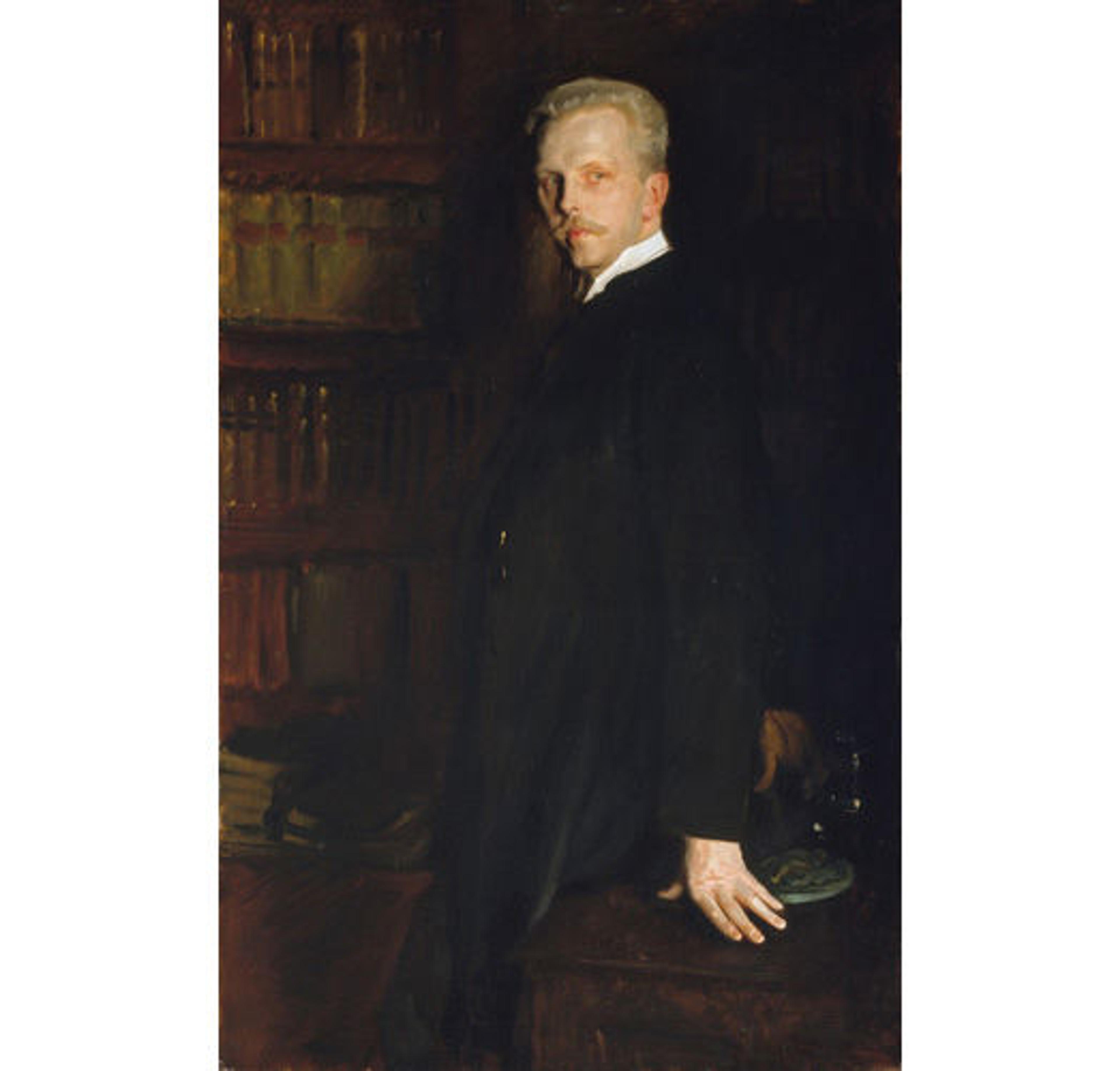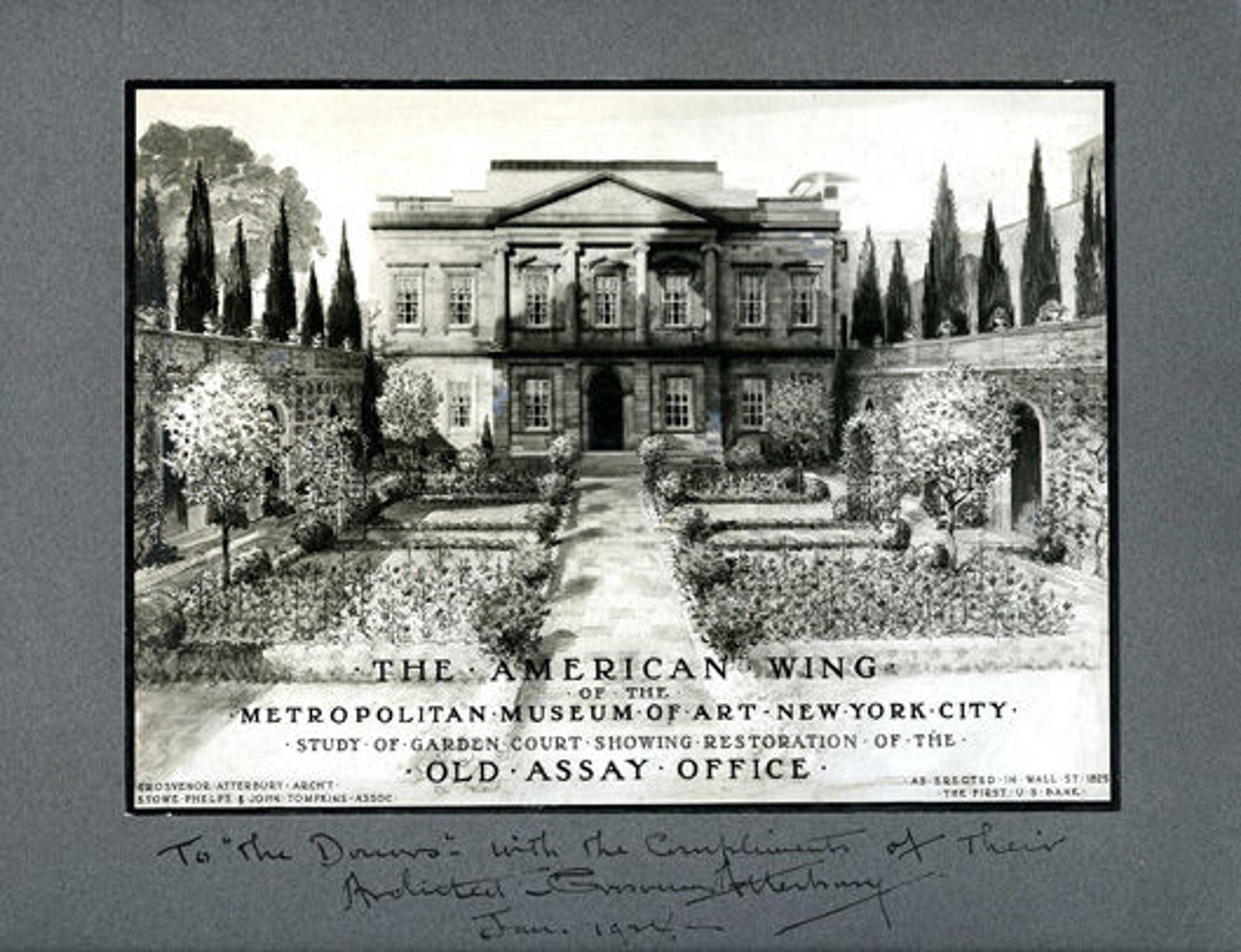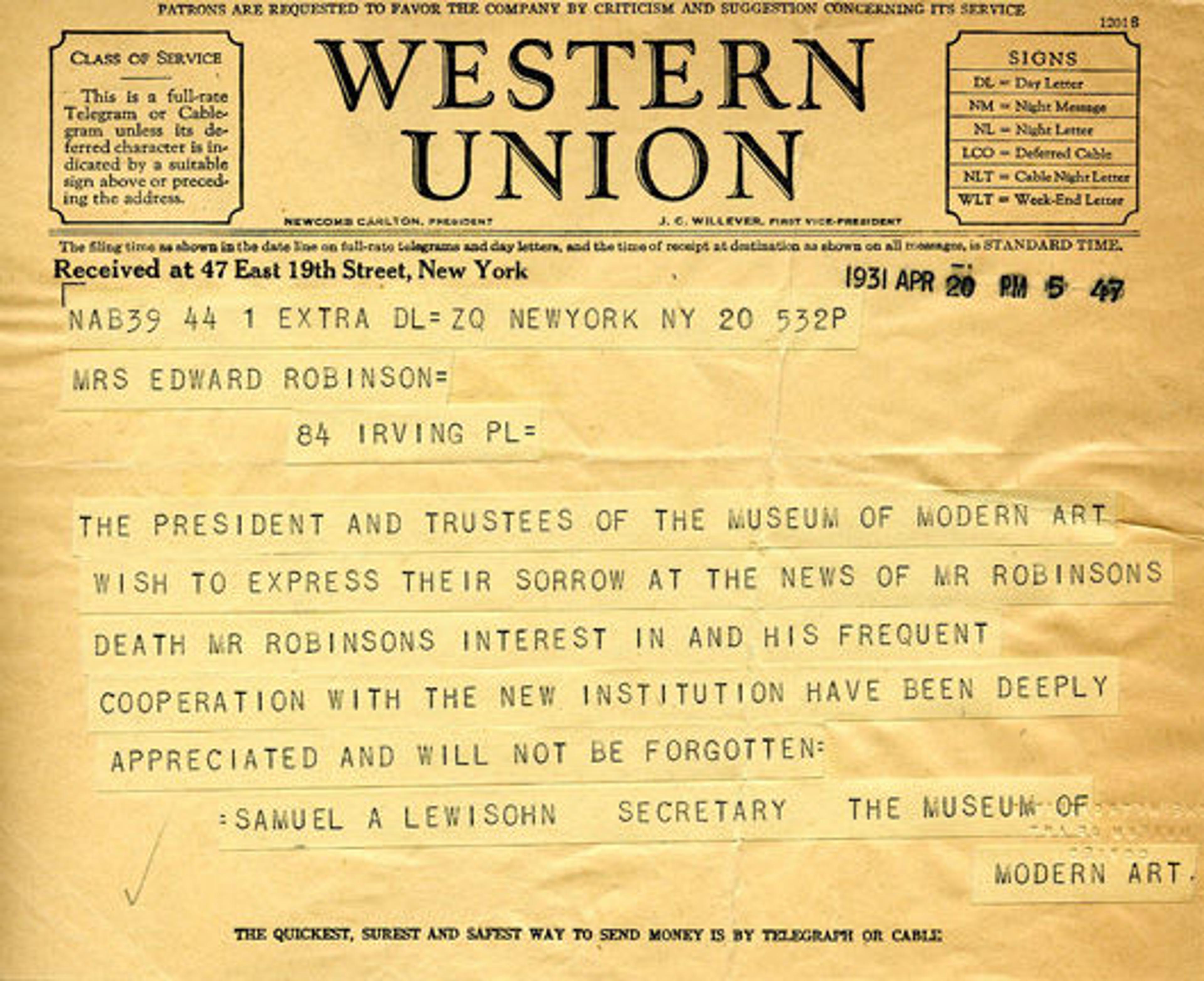
John Singer Sargent (American, 1856–1925). Edward Robinson, 1903. Oil on canvas; 56 1/2 x 36 1/4 in. (143.5 x 92.1 cm). The Metropolitan Museum Of Art, New York, Gift of Mrs. Edward Robinson, 1931 (31.60)
«One hundred years ago today, Edward Robinson, curator of classical art and assistant director at The Metropolitan Museum of Art, was named the Museum's third director. Known for his broad knowledge, connoisseurship, and professionalism, he was a logical choice to replace the accomplished Sir Casper Purdon Clarke, who had reluctantly resigned from his duties after a long struggle with declining health.»
Robinson was the Metropolitan's first American-born and -educated director. Having begun his career at Harvard as a student of classical archaeology, he went on to serve as curator of classical antiquities at the Museum of Fine Arts, Boston, where he reached the rank of director. A bitter disagreement with a faction of the MFA's board of trustees—over the proposed arrangement of galleries for the museum's new building on the Fenway—allegedly caused Robinson's sudden break with the museum, and he was free to accept a position in New York.
The Met benefited greatly from Robinson's vision and diligence. His twenty-one-year tenure as director (1910–1931) was a period of tremendous expansion for the Museum. The number of curatorial departments more than doubled during this time, as did the physical footprint of the Museum. To house its rapidly growing collection, the Museum quickly constructed wings for decorative arts, classical antiquities, and American art, and acquired The Cloisters, a collection of medieval sculpture and architectural fragments owned by the sculptor and collector George Grey Barnard (American, 1863–1938), to showcase medieval art and architecture. (See "Today in Met History: June 12" for more about the Museum's purchase of The Cloisters.)
Robinson's work as classical curator, which continued through 1925, did not seem to bias his directorial vision. In fact, one of his great legacies is his pioneering advocacy of American art, which was marked by several major exhibitions during his tenure, featuring artists such as Augustus Saint-Gaudens, Thomas Eakins, and James McNeill Whistler.

Photograph of rendering of Old Assay Office facade with proposed garden for the new American Wing. Signed by G. Atterbury to the De Forests, January 1924. Office of the Secretary Records, The Metropolitan Museum of Art Archives
Despite Robinson's support of all the Met's curatorial departments, his particular expertise in classical art was noteworthy and merited celebration. In 1928, at the occasion of Robinson's seventieth birthday, Museum staff members gathered around a cake resembling an ancient temple, its portico lined with birthday candles, staged in a miniature courtyard. To enliven the scene, staff of the Classical Department dressed in Greek costume and mingled with the crowd.

Photograph of Edward Robinson's seventieth birthday party [Robinson, center], 1928. Photograph Collection, The Metropolitan Museum of Art Archives
After twenty-one years of working diligently on behalf of the Museum, Edward Robinson died at the age of seventy-three. Letters of condolence, remembering him for his collegial spirit above all else, flooded in from institutions across the country and from as nearby as the Museum of Modern Art. His contributions to The Metropolitan Museum of Art during a pivotal period provided a solid foundation for continuing scholarship and expansion.

Telegram from the Museum of Modern Art to Mrs. Edward Robinson conveying condolences, April 20, 1931. Office of the Secretary Records, The Metropolitan Museum of Art Archives
Adrianna Del Collo is associate archivist in the Museum Archives.
Related Resource
Museum Archives